Let's broaden the appeal of Japanese cuisine by making Dashi Soy Sauce, which is milder and more flavorful than regular soy sauce. It adds an aromatic twist to your dishes, enhancing their flavor even further.
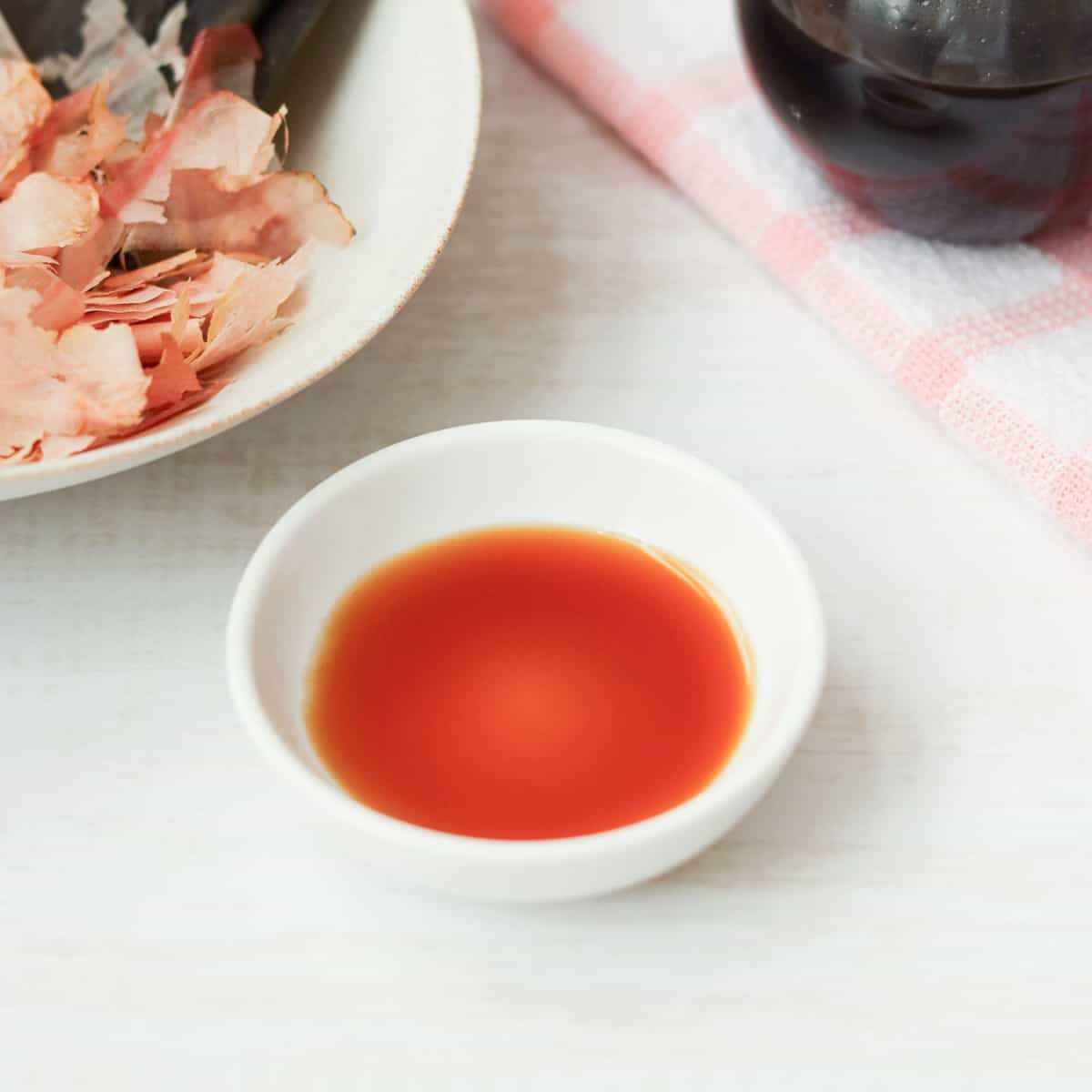
Jump to:
What is Dashi Soy Sauce?
Dashi Soy Sauce is a type of soy sauce made by infusing dashi ingredients into soy sauce. "Dashi" refers to Japanese soup stock. While this seasoning can be made with just soy sauce and dashi ingredients, it is commonly simmered with sake and mirin to create a rich, slightly sweet flavor.
The addition of dashi transforms soy sauce into something irresistibly flavorful. Compared to regular soy sauce, it has a lower salt content and a milder flavor, making it an ideal choice for those watching their sodium intake. Thanks to the rich umami from the dashi, the reduced salt content doesn’t compromise the overall taste.
Although it may not be a traditional staple in Japanese cooking, it is a great option for expanding your Japanese culinary repertoire. It takes little effort to make, so feel free to give it a try.
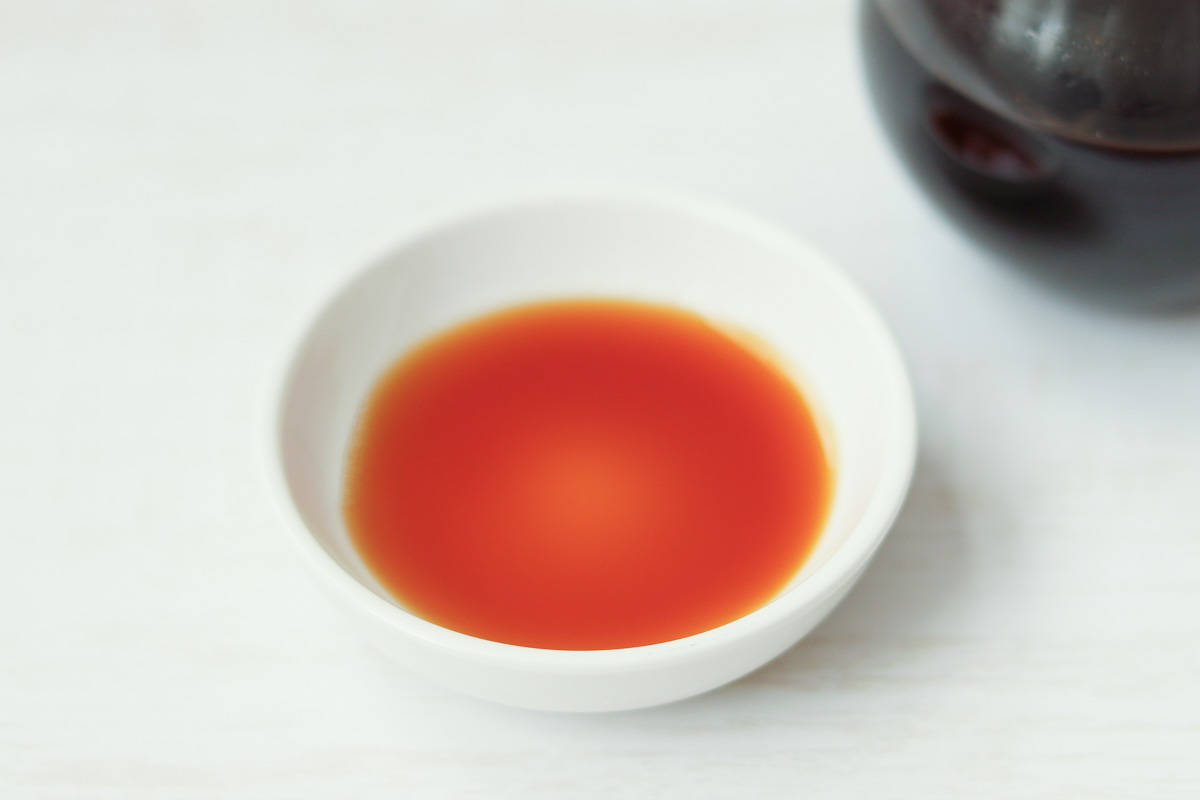
Choosing dashi ingredients
So, what kinds of dashi ingredients are used to make dashi soy sauce?
The ingredients are basically the same as those used to make dashi stock. This means you can use a variety of ingredients, such as kombu, bonito flakes (katsuobushi), anchovies, mackerel flakes, and dried shiitake mushrooms. The flavor of dashi soy sauce varies depending on the ingredients you use, but all of these variations are still considered dashi soy sauce.
You can use just one ingredient or combine two or more. In this recipe, I used kombu and bonito flakes—the most common combination in Japan. If you would like to try other ingredients, adjust the recipe as you would when making dashi with those ingredients.
Recommended dishes for dashi soy sauce
Dashi soy sauce is a seasoning that can be used as a substitute for regular soy sauce. It makes it easy to add the essence of dashi to your dishes. In Japanese cuisine, it can be used in almost any dish, but I personally find it especially well-suited for the following:
- Tamago Kake Gohan (rice mixed with raw egg)
- Kamatama Udon (udon noodles mixed with raw egg)
- Onsen Tamago (hot spring eggs)
- Hiyayakko (Japanese chilled tofu)
- Ohitashi (blanched ingredients soaked in seasoned dashi)
- Gomaae (blanched vegetables tossed with sesame sauce)
- Takikomi Gohan (cooked rice with various ingredients)
- Chicken Karaage (Japanese fried chicken)
Among these, it is more commonly used in Tamago Kake Gohan, Kamatama Udon, and Onsen Tamago than regular soy sauce. Its mellow, savory flavor pairs particularly well with raw or semi-cooked eggs. In Japan, some people even keep this seasoning on hand specifically for these dishes.
There are many other dishes that can benefit from this seasoning, so I encourage you to experiment with various recipes.
Differences from "Mentsuyu" and "Shiro Dashi"
If you are familiar with Japanese cuisine, you might think of "mentsuyu" (Japanese noodle soup base) or "shiro dashi" (Japanese light-colored soup base) when it comes to items made with dashi and soy sauce. Both are types of Japanese soy-based seasonings made from ingredients similar to those used in dashi soy sauce.
Mentsuyu is made by blending soy sauce with dashi, mirin, and sugar, resulting in a sweeter flavor profile compared to dashi soy sauce. Shiro dashi is a mixture of light soy sauce or white soy sauce with dashi and mirin, allowing you to season dishes without darkening their color. The primary differences from dashi soy sauce lie in their color and ingredients.
While dashi soy sauce is commonly used as a substitute for regular soy sauce, mentsuyu and shiro dashi are widely used in udon soup, soba soup, and Japanese simmered dishes. All of these are popular seasonings in Japanese households, and if you want to make Japanese cooking easier, they are worth keeping on hand.
However, I personally find that having just dashi soy sauce might be enough if you are aiming to achieve an authentic taste of Japan. This is because mentsuyu and shiro dashi are merely convenient alternatives to using soy sauce, mirin, and sugar, helping save time and ensure a consistent flavor.
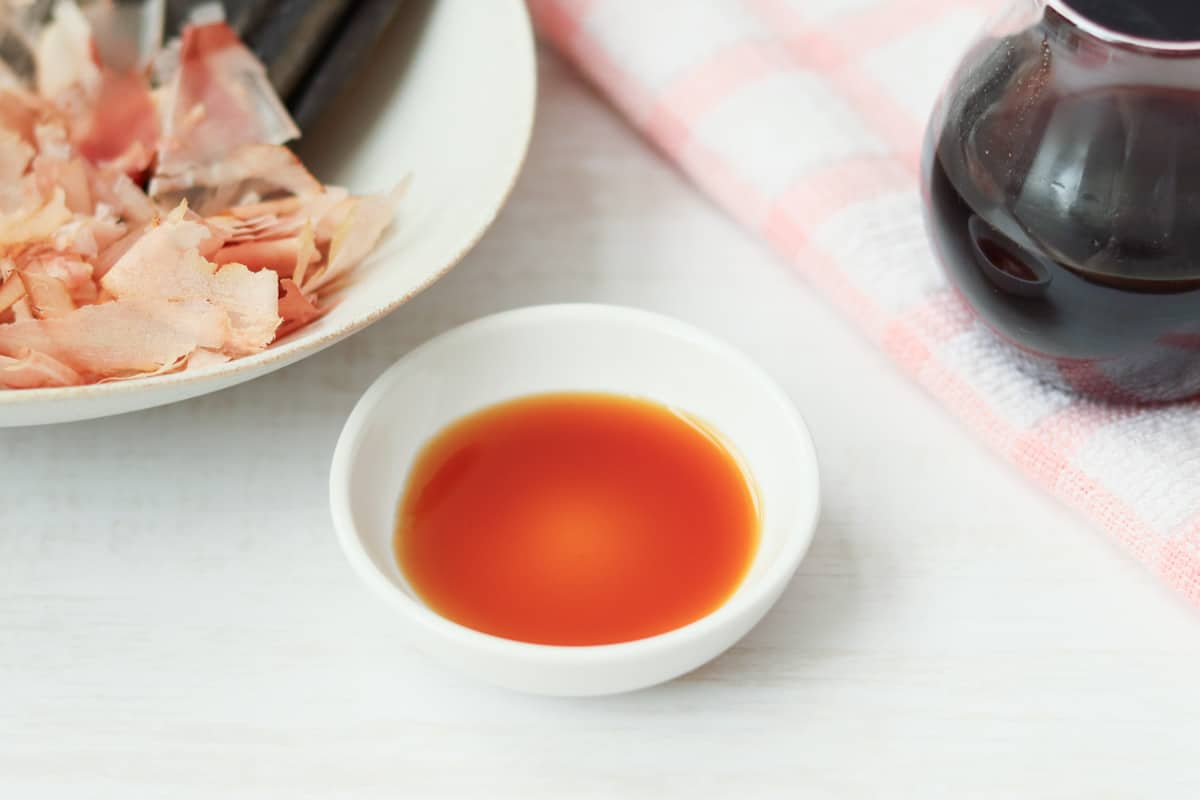
📋Step-by-step recipe
Ingredients
- ⅓ cup soy sauce
- 2 Tbsp sake
- 2 Tbsp mirin
Dashi ingredients:
- ¼ cup bonito flakes (katsuobushi)
- 0.05 oz kombu (dried kelp)
Instructions
🕒 Total: 3 hrs 5 mins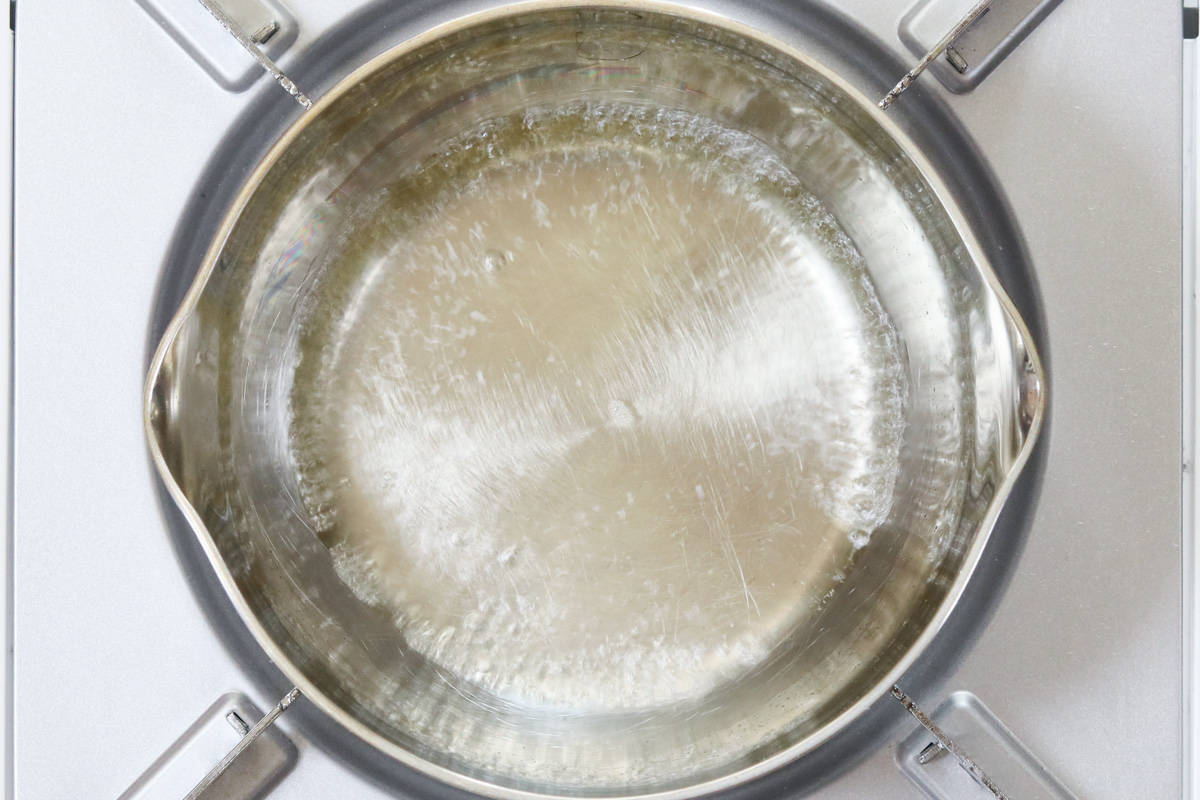
Step 1
Put sake and mirin in a pot and simmer over low heat for 1-2 minutes until the alcohol has evaporated (i.e., until the strong smell dissipates).
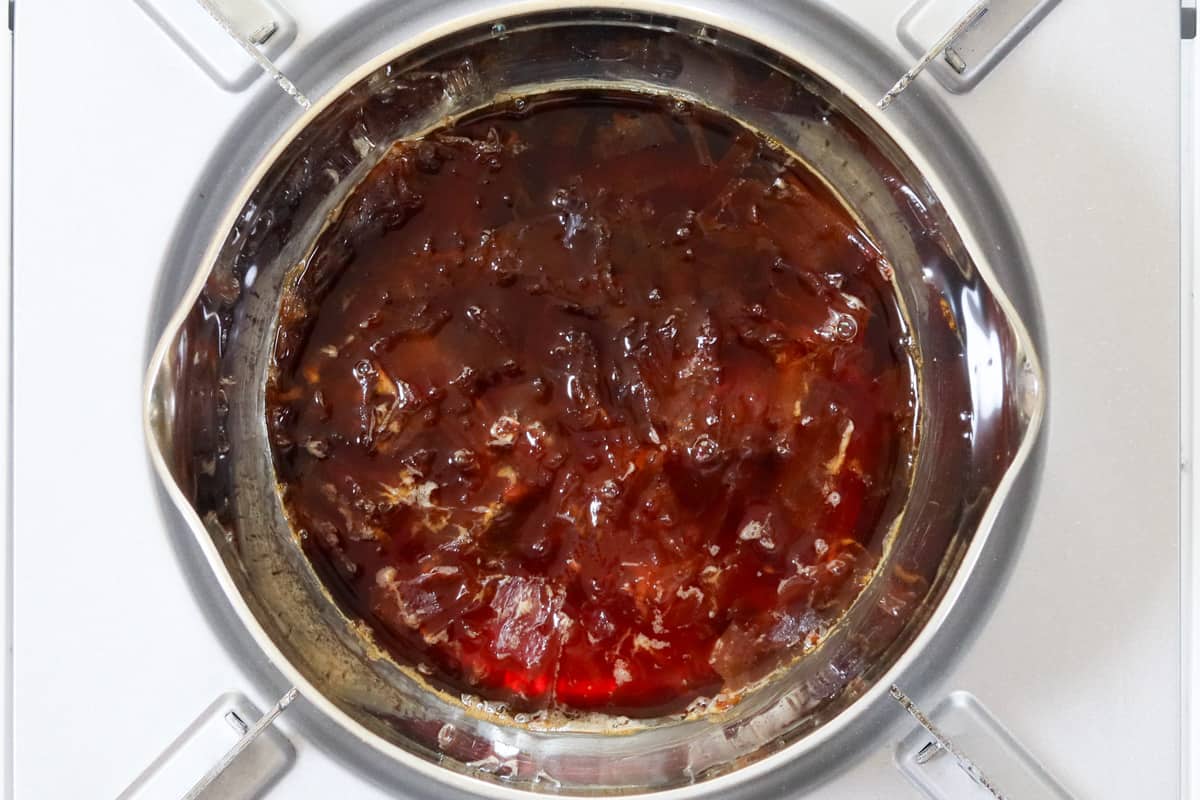
Step 2
Pour soy sauce into the pot and continue heating until it begins to boil. Once boiling, turn off the heat, add bonito flakes, and let them steep for 2 minutes. Strain the mixture through a fine-mesh sieve into a container.
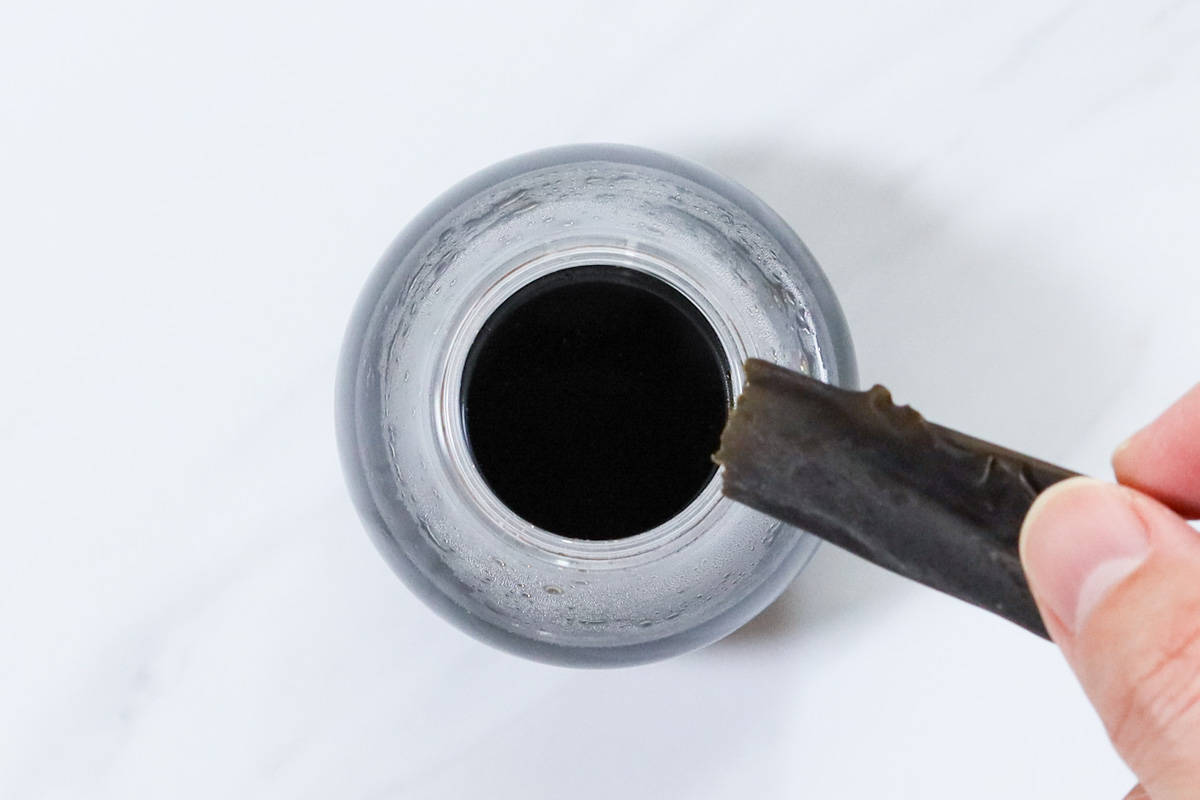
Step 3
Add kombu to the container and let it soak for 3-9 hours. After soaking, remove the kombu.
To store
You can store it in the refrigerator for up to 3 weeks.
Cooking tips
- Soy sauce should be added later. If it is simmered with sake and mirin, its flavor may become less pronounced.
- Avoid soaking the kombu in the seasoning mixture for too long. If it is soaked for more than 10 hours, the liquid may become cloudy and develop a strong kombu odor.
Customizing the flavor
This recipe uses mirin for a slightly sweet flavor, but you can adjust the amount to suit your taste. Depending on your preference, you can either reduce it or omit it entirely.
Similarly, by changing the dashi ingredients, you can create different flavor profiles with this seasoning. If you do so, there is no need to adjust the quantities of the other ingredients.
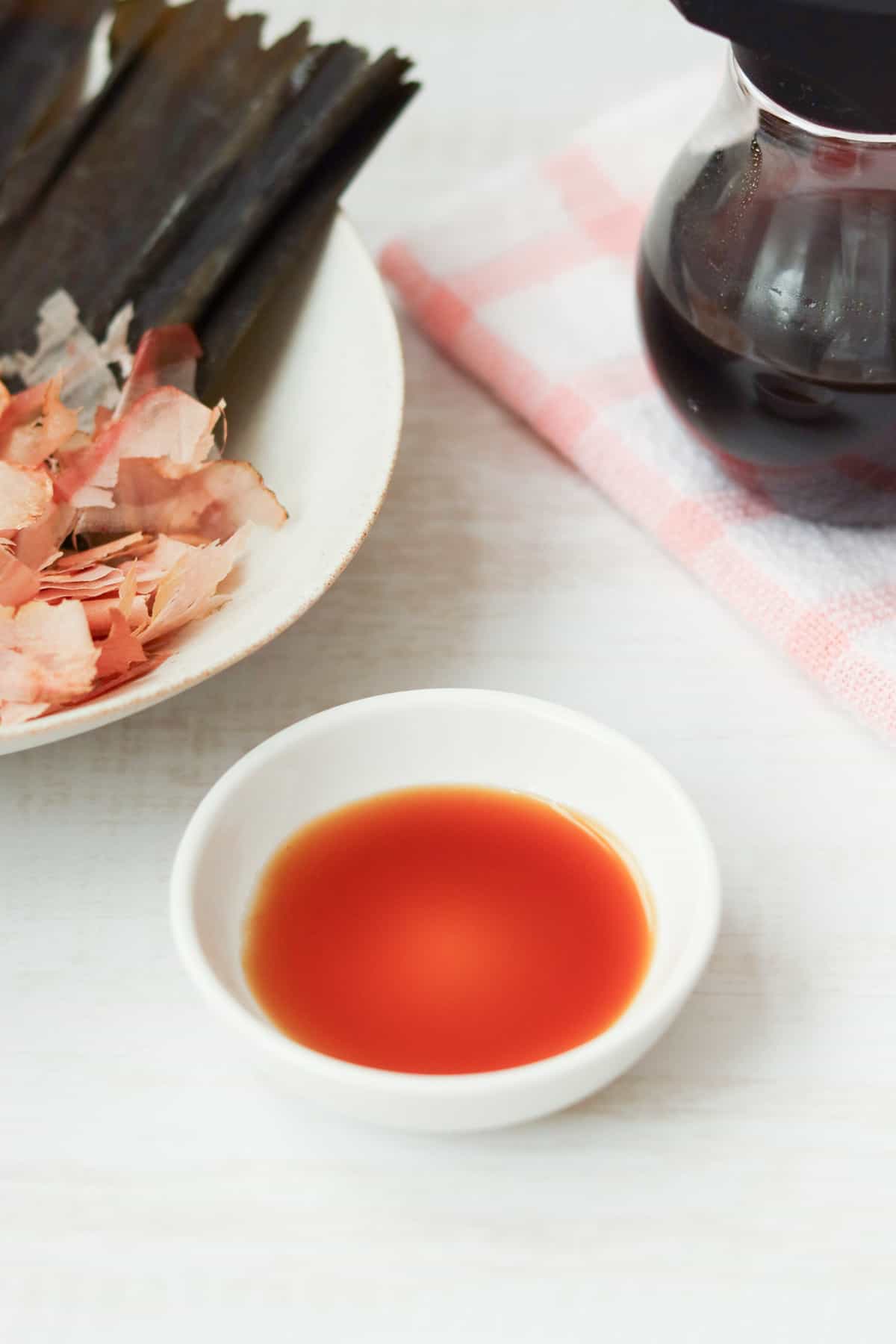
If you try this recipe, I’d love to hear what you think. Please consider leaving a review and star rating in the comments below. If you enjoyed it, I’d really appreciate it if you shared it with your friends.
Another soy sauce recipe you'll love
Recipe card

How to Make Dashi Soy Sauce
Ingredients
- ⅓ cup soy sauce
- 2 Tbsp sake
- 2 Tbsp mirin
Dashi ingredients:
- ¼ cup bonito flakes (katsuobushi)
- 0.05 oz kombu (dried kelp)
Instructions
- Put sake and mirin in a pot and simmer over low heat for 1-2 minutes until the alcohol has evaporated (i.e., until the strong smell dissipates).
- Pour soy sauce into the pot and continue heating until it begins to boil. Once boiling, turn off the heat, add bonito flakes, and let them steep for 2 minutes. Strain the mixture through a fine-mesh sieve into a container.
- Add kombu to the container and let it soak for 3-9 hours. After soaking, remove the kombu.
Notes
- You can store it in the refrigerator for up to 3 weeks.


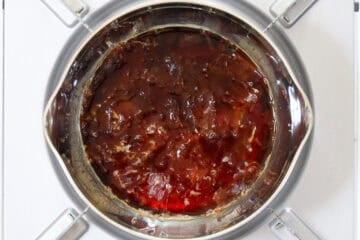
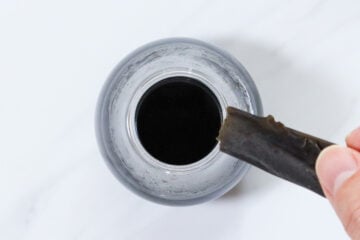



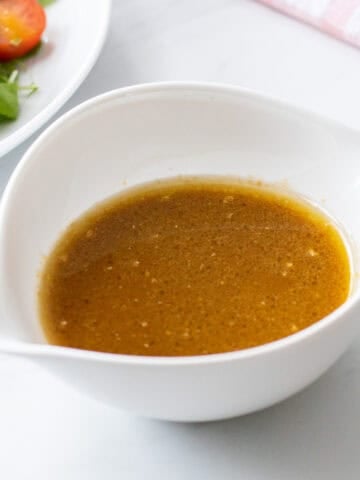
Leave a Rating and a Comment